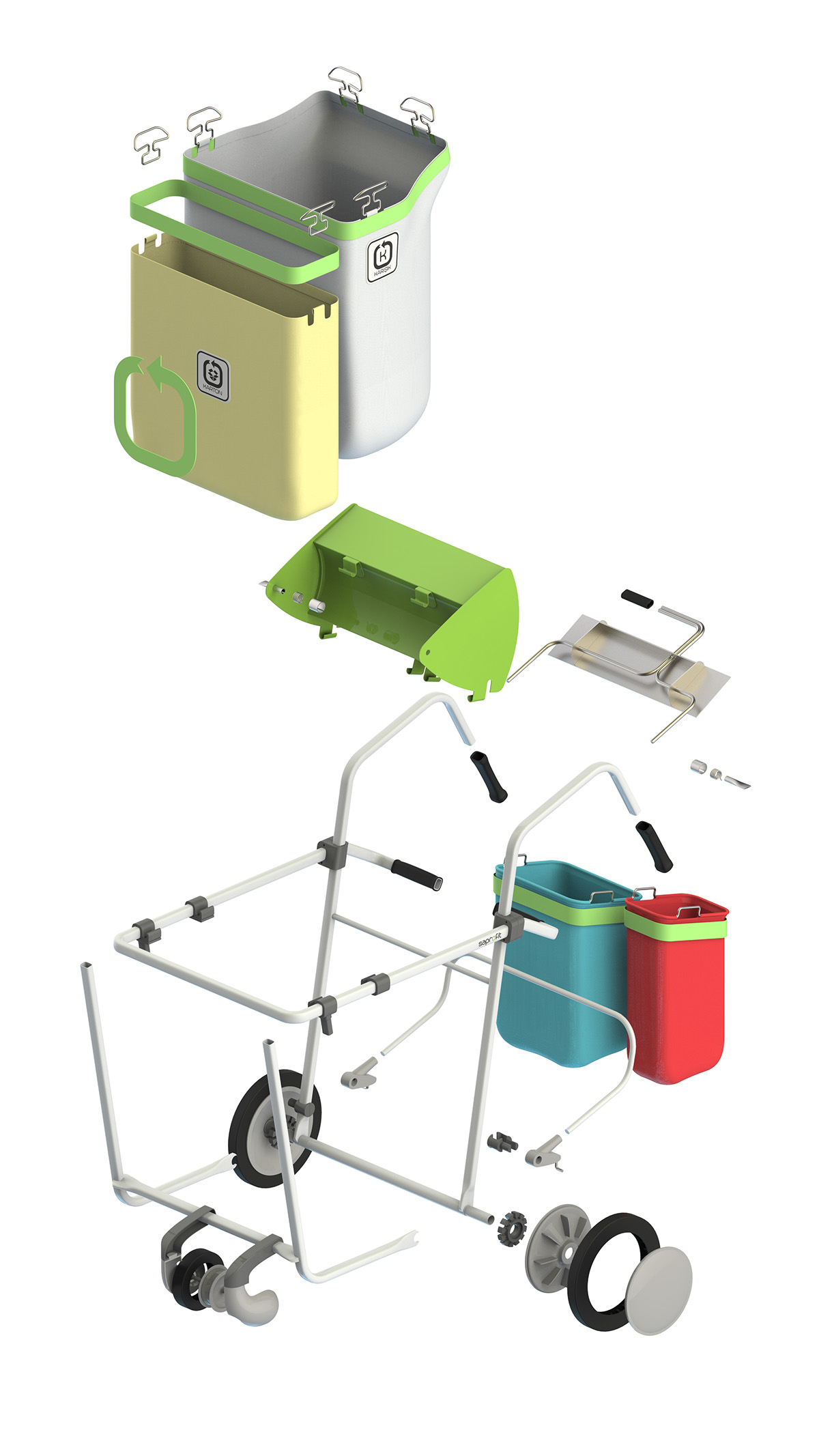Overview
Saprofit is a cart that offers a practical and feasible solution for the problems of Recycling Workers in Turkey. Collection of recyclable wastes is an unofficial work in Turkey. Thus a legitimate system design for the product was designed too.

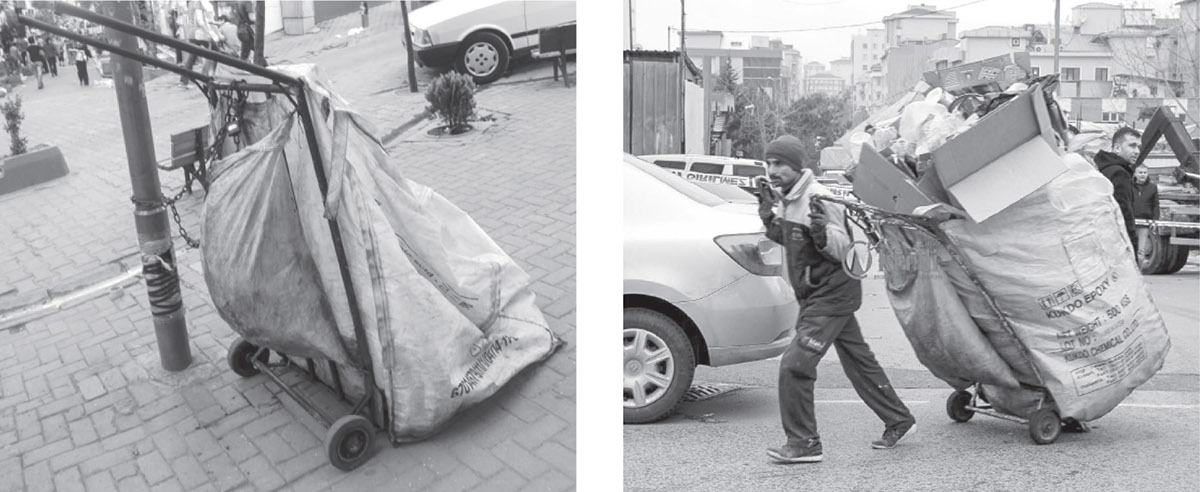
System Design
In Turkey, the collection of recyclable domestic waste is done mostly by street collectors, who work in hard conditions and without being registered. One solution can be the integration of the street collectors within a municipality system. Integration of recyling workers will enhance working conditions, health and social statuses of these workers, and will make the overall system more effective. Saprofit is designed to fit in such a scenario. Saprofit can easily move on different surfaces. It is easy to use at sidewalk ways and ramps thanks to its wheel construction and the materials combination. It can squash and classify the waste materials. The reflector bands helps safety in traffic. Saprofit’s aesthetic look is compatible with a city identity.

Saprofit recycling cart is designed to fit in a new type of recycling system which offers collaboration of recycling workers and municipalities, resulting in higher recycling rates and better working conditions for workers.
Product Design

Saprofit cart has improved ergonomics compared to existing carts. Saprofit cart can be pushed on 3 wheels on smooth surfaces for effectiveness. Moreover it can be pushed on 2 wheels on bad roads with ramps and holes.
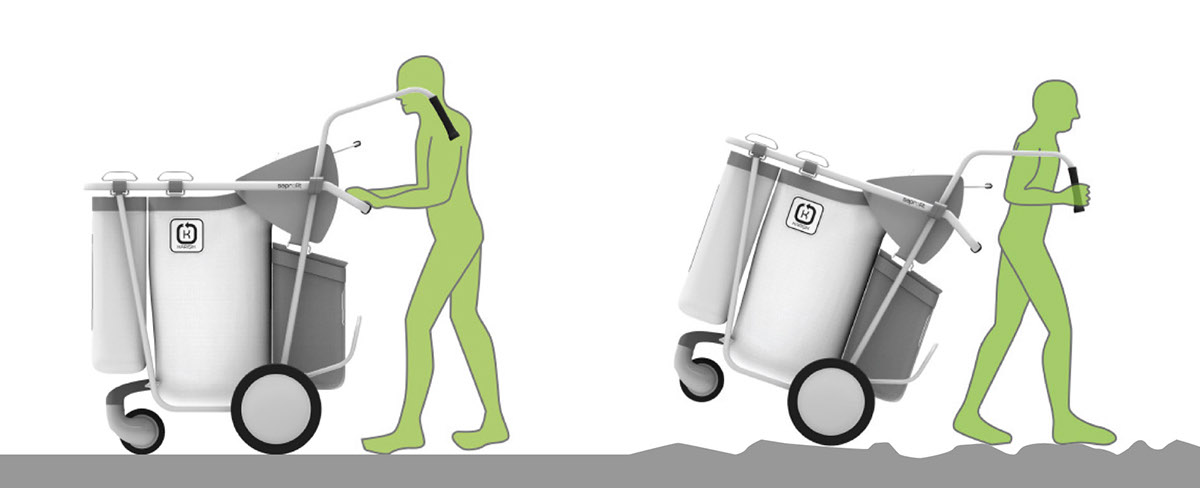
Saprofit has big wheels for the ease of use in urban areas.
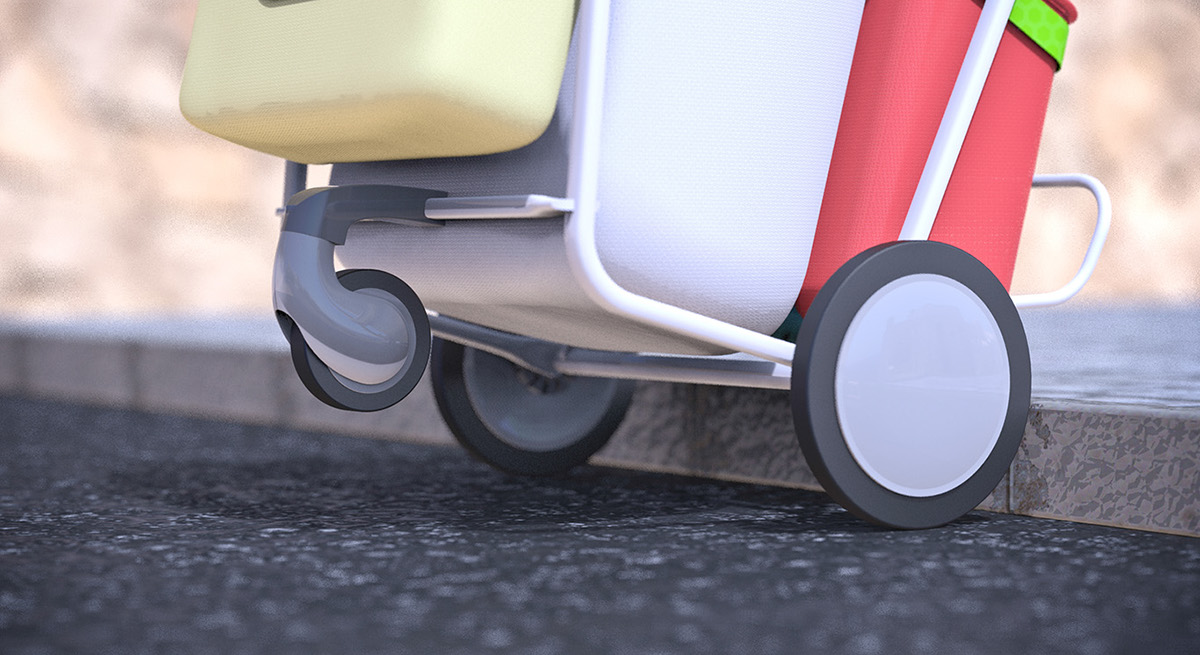
Saprofit has reflector bands for visibility in dark.
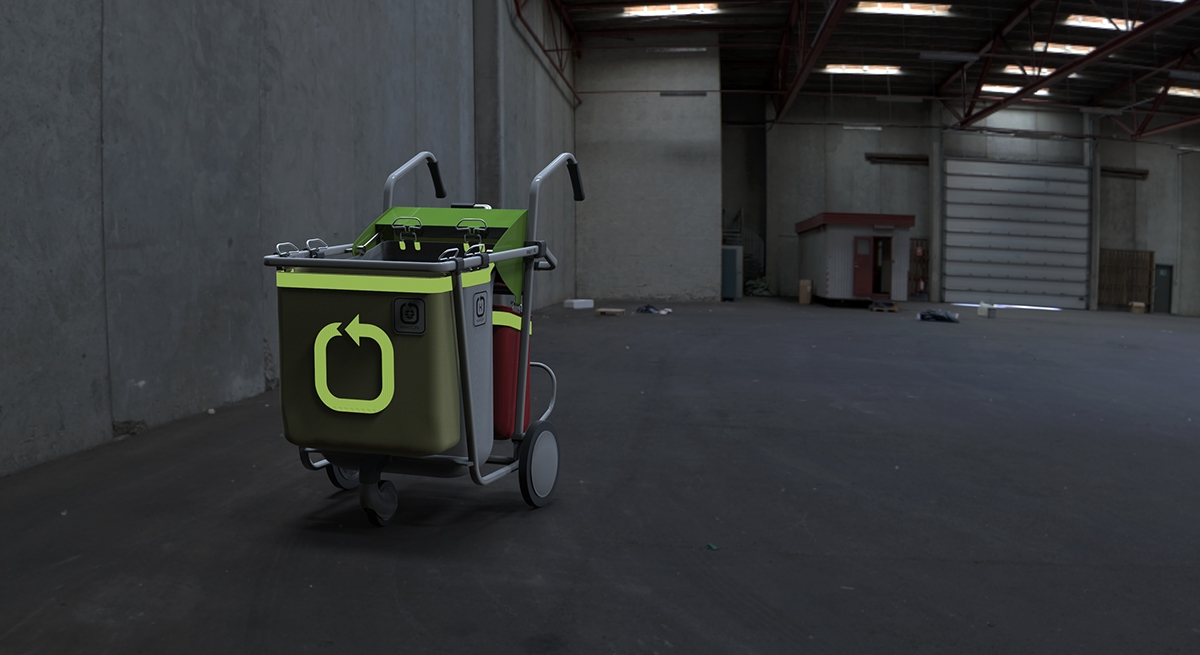
The cart has four detachable sacks for different types of waste materials.
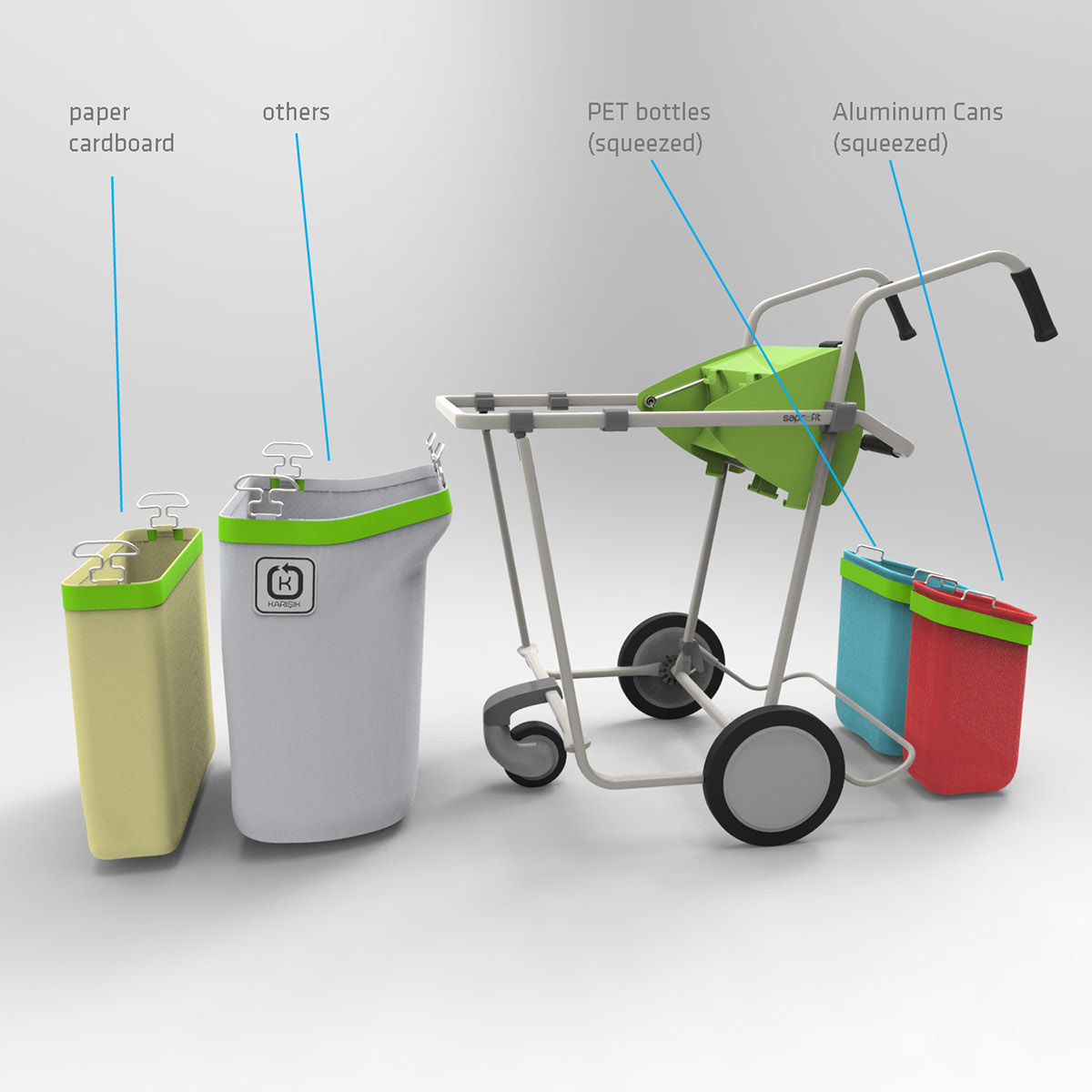
Saprofit can squueze PET bottles and Aluminum Cans with its squuezer mechanism. So that these waste materials occupy less space.

